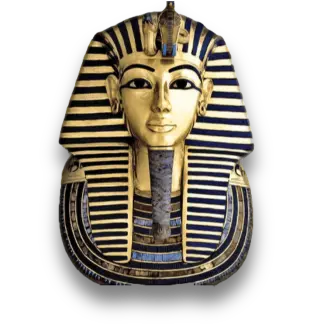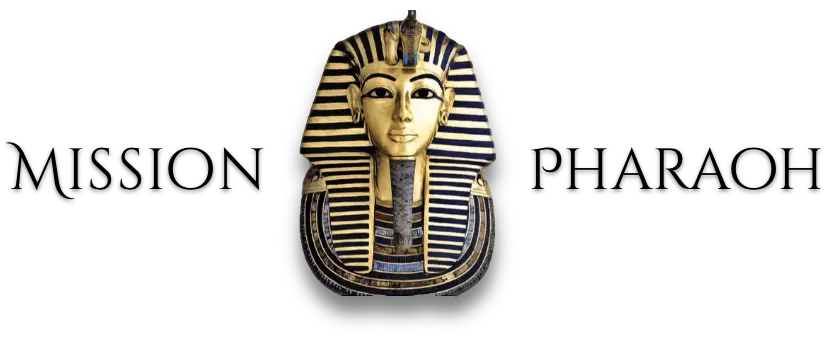
Located on the Giza Plateau, is a beautiful monumental relic of centuries gone.
Stands, turned on each side to the four cardinal directions with extraordinary accuracy.
Built from limestone blocks weighing several to several dozen tons, it is still the largest construction in existence with unprecedented precision to this day.
The work of Egyptian art is both its exterior and interior, which consists of corridors and chambers, including this one in particular, the Chamber of King Khufu (Cheops), with a massive granite sarcophagus standing inside.
Video Source: Khufu Pyramid Complex: Site: Giza; View: Khufu Pyramid Complex. Giza Project at Harvard University. Online. Available at: http://giza.fas.harvard.edu/videos/87550/full/
A figurine of King Khufu, found in the ruins of a temple in Abydos in 1903. IMG source: https://en.wikipedia.org/wiki/Khufu
Unfortunately, despite many attempts, Khufu's mummy has never been found, [1].
A group of scientists presumes it was stolen or destroyed during the numerous lootings of the Great Pyramid.
Another fraction claims that the King never rested in a sarcophagus in the Great Pyramid, and his tomb is still waiting to be discovered...
Empty sarcophagus in the King's Chamber of the Great Pyramid of Giza.
[1]: Laura Spinney: „Secret chamber may hold key to mystery of the Great Pyramid”. The Guardian, 2004. Online. Available at: https://www.theguardian.com/world/2004/aug/30/arts.science
Mission Pharaoh, an international group of associations from various countries, has been following this trail for more than 20 years.
The Egyptian history of the Mission dates back to 2006, when a group of amateurs and geologists, in cooperation with the National Institute of Astronomy and Geophysics in Cairo, led to the first georadar research in years near the three pyramids in Giza (Great Pyramid, Pyramid of Khafre, Pyramid of Menkaure).
Inital group in June 2005. From the left side: Andrzej Wójcikiewicz, Cezary Stachoń, Iwona Stankiewicz, Lucyna Łobos, Patrick Geryl, Andrzej Kapłanek, Adam Szynkiewicz
The GPR scans were then performed to a depth of 30 m using the GSSI SIR 2000 device in nine previously selected zones.
The research was led by a geophysicist from the NRIAG, Dr. Abbas M. Abbas (now a professor).
The NRIAG team performing GPR surveys on the Giza Plateau in 2006, funded by Mission Pharaoh
Hidden shafts, tunnels, corridors, or chambers were confirmed in 7 of the 9 selected locations.
The research results were published in [2], in which the authors directly indicate that:
"Given the preceding illustration and assertion, we can presume the existence of a momentous diversity of archaeological structures at the Pyramids plateau which remain, as yet, unexposed. These structures could be a linked net of tunnels and shafts that may well lead to precious tombs.”
Locations of zones surveyed by the NRIAG during the Giza Plateau survey in 2006, funded by Mission Pharaoh.
IMG Source, [2]: Abbas M. Abbas , Fathy Shaaban, El-said A. El-Sayed and Tarek Abdel Hafez. „Uncovering the Pyramids- Giza Plateau in a Search for Archaeological Relics By Utilizing Ground Penetrating Radar“. Journal of American Science 2012; 8(2), pp. 168-174. (ISSN: 1545-1003). Available at: JofAS_0802_168_174.pdf
For the Mission, the most attractive area is zone (9), located just off the border between the Plateau and the village of Nazlet‑El‑Samman, where research has revealed a “GPR profile of area (9) which displays the presence of a cave-like feature at depth 20 m" [2].
Result of the GPR profile of the area marked as (9) with a possible archaeological target, made by NRIAG on behalf of Mission Pharaoh.
IMG Source, [2]: Abbas M. Abbas , Fathy Shaaban, El-said A. El-Sayed and Tarek Abdel Hafez. „Uncovering the Pyramids- Giza Plateau in a Search for Archaeological Relics By Utilizing Ground Penetrating Radar“. Journal of American Science 2012; 8(2), pp. 168-174. (ISSN: 1545-1003). Available at: JofAS_0802_168_174.pdf
Since the 1980s, the greatest contemporary archaeologists and Egyptologists, including Dr. Zahi A. Hawass, Dr. Mark Lehner,
have pointed to this area as the beginning of the expected location of the palace-temple complex of King Khufu, [3,4,5], the whole of which is located under the site of the present village of Nazlet‑El‑Samman.
Reconstruction of the organisation of the Plateau and adjacent areas from the time of King Khufu.
IMG Source, [3]: Lehner, Mark. "The Development of the Giza Necropolis. The Khufu Project." Mitteilungen des Deutschen Archäologischen Instituts, Abteilung Kairo 41 (1985), pp. 109-143. Available at: Lehner_mdaik_41_1985.pdf
[4]: Zahi A. Hawass: "THE FUNERARY ESTABLISHMENTS OF KHUFU, KHAFRA AND MENKAURA DURING THE OLD KINGDOM", A Dissertation in Oriental Studies, Presented to the Graduate Faculties of the University of Pennsylvania in Partial Fulfillment of the Requirements for the Degree of Doctor of Philosophy, pp. 133-138, 1987. Available at: Hawass_diss_1987.pdf
[5]: Khufu Pyramid Complex: Site: Giza; View: Khufu Valley Temple. Giza Project at Harvard University. Online. Available at: Giza FAS Harvard
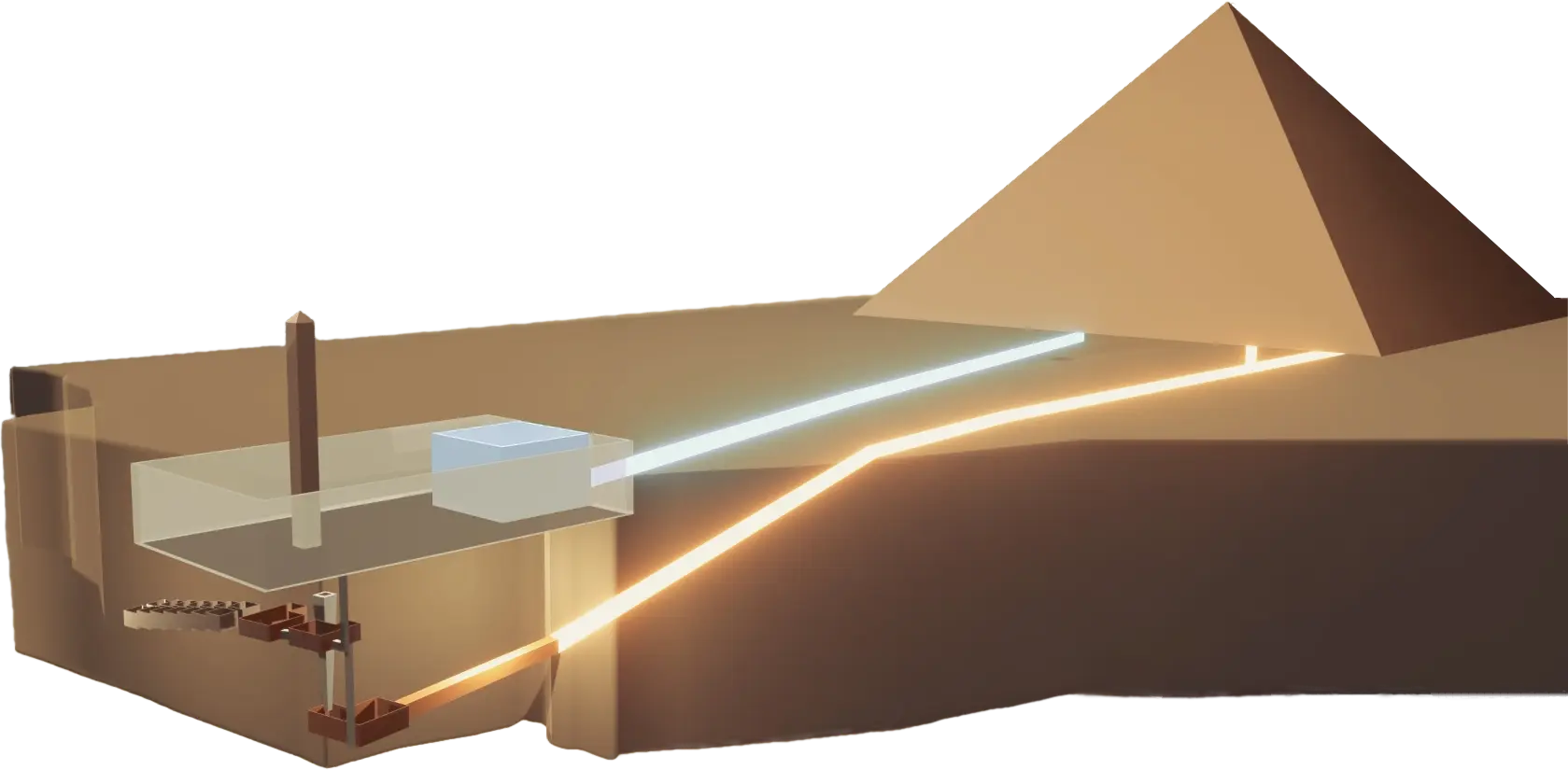
Shortly after analysing the results of the 2006 study, Mission Pharaoh applied to the Supreme Council of Antiquities of Egypt to begin excavations, allowing descent to the underground from the side of the Giza Plateau and reaching the subterranean structures of King Khufu.

Visualisation of the tomb of King Khufu and its connection with the Great Pyramid through a network of tunnels
As a result of continuous requests, in 2008, the Supreme Council of Antiquities issued permission to Cairo University, cooperating with the University of Wrocław, with funding from Mission Pharaoh, for GPR survey and land clearing, however, in the vicinity of the Pyramid in Hawara.
Dean of the Faculty of Archaeology, Prof. Dr. Alaa el-din M. Shaheen (left) signing the contract on behalf of Cairo University with Vice-President Prof. Dr. Krzysztof Nawotka (right) from the University of Wrocław for field work in Hawara in 2008, funded by Mission Pharaoh.
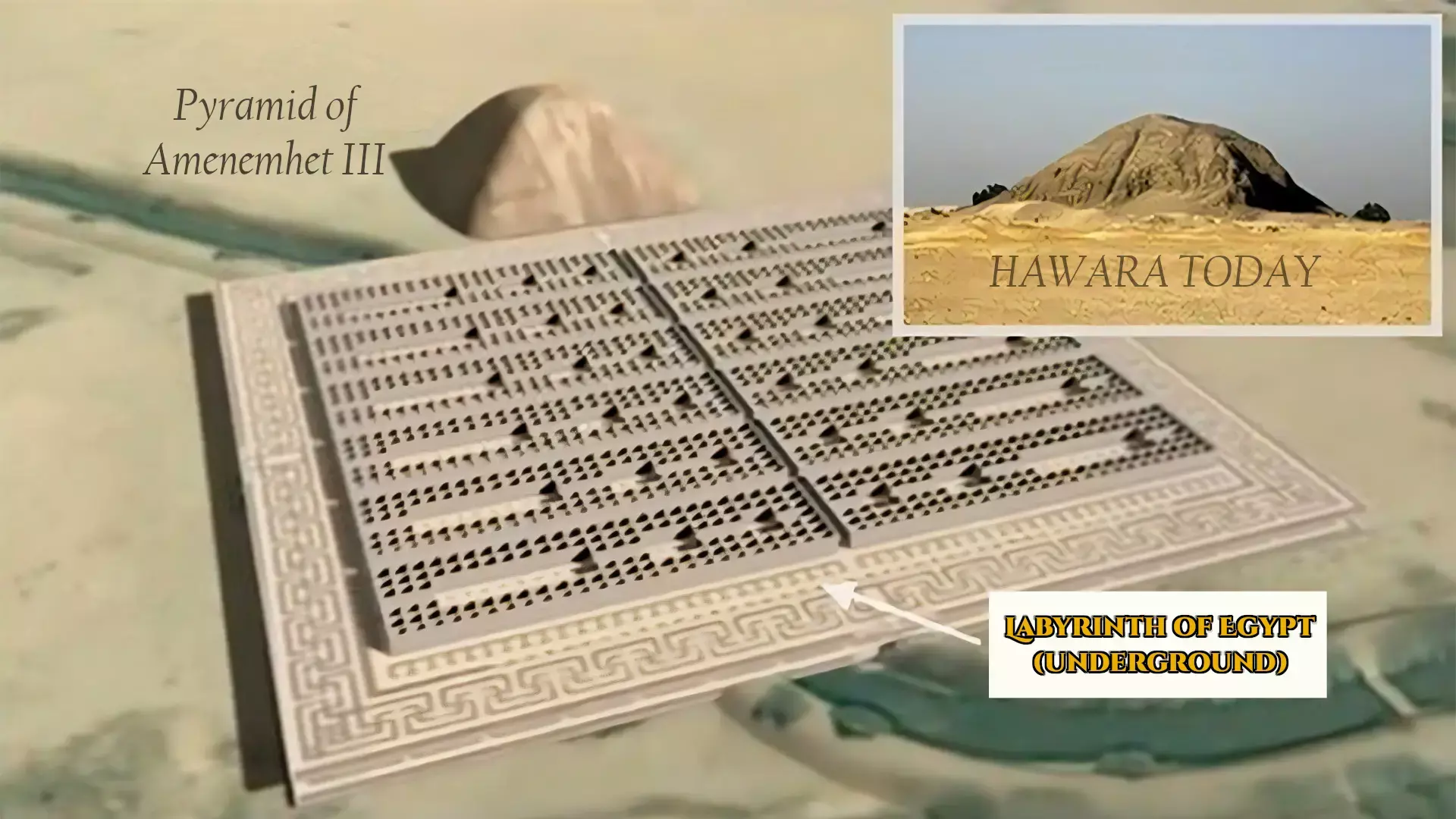
The research, conducted by the Dean of the Faculty of Archaeology of the University of Cairo Prof. Dr. Alaa el-din M. Shaheen, aimed at searching for the remains of the Great Labyrinth described by Herodotus in the 5th century BC.
Reconstruction of the predicted location of the remains of Herodotus' Great Labyrinth.
The results of the GPR surveys carried out in this area to a depth of approximately 20 m were independently analysed by the University of Cairo and the University of Wrocław.
In this case, anomalies suggesting the presence of underground shafts and chambers were also confirmed, presented at the "12th International Conference on Ground Penetrating Radar, 15-19 June 2008 Birmingham, UK" and published in [6].
Fragment of a cross-section indicating the presence of an anomaly at a distance of 70 - 75 metres at an estimated depth of 7 - 12 metres, detected at the Hawara mud pyramid in 2008 during work funded by Mission Pharaoh.
IMG source, [6] Adam Szynkiewicz: “GEOLOGICAL RESEARCH FOR DETECTION OF WATER VOIDS FLOODED PYRAMID AT HAWARA (FAYUM), EGYPT. GPR ANOMALIES AT THE HAWARA PYRAMID (RESUME OF REPORTS: I – IV)”, 2009. Available at: Article

During the cleansing of the Hawara Necropolis from the topsoil to a depth of 1.5 m, two mummies, a golden mask, figurines and ceramic elements, and crocodile skeletons were found [7].
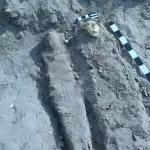
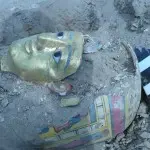
The next stage of work involved excavations at a much greater depth. Despite obtaining permission, after just a month, it was unexpectedly revoked in July 2009, and...
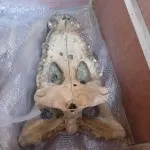

Artefacts found during the 2008 Hawara Necropolis cleansing funded by Mission Pharaoh
[7] Gomaa Abdel-Maksoud, Mohamed Abdel-Hady: “Effect of burial environment on crocodile bones from Hawara excavation, Fayoum, Egypt”, Journal of Cultural Heritage, 12 (2), pp. 180-189, 2011. Available at: Culher_2010_12_002.pdf
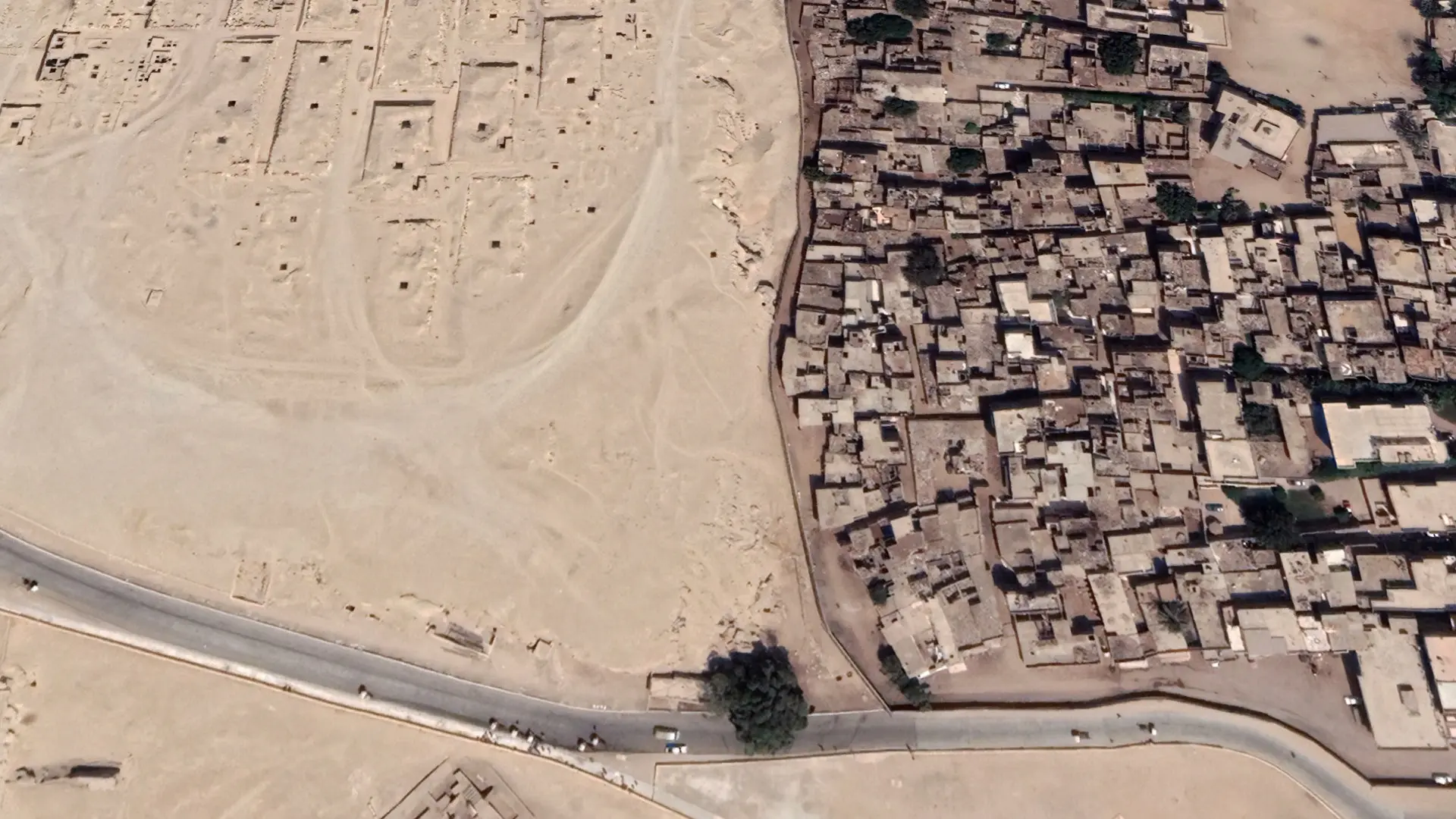

In 2010, Mission Pharaoh financed the purchase of real estate (stable) within the village of Nazlet‑El‑Samman, which borders the Giza Plateau (only 140 m from the Sphinx to the north-east).

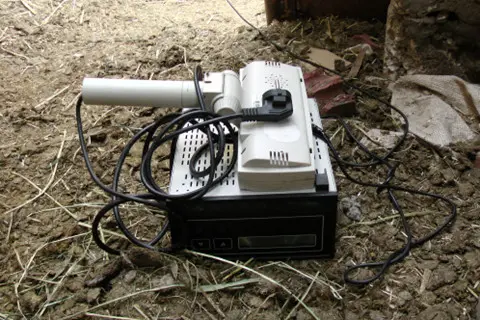
At this area, in 2011, Eng. William Brown, a member of Mission Pharaoh, conducted numerous private ground penetration surveys.
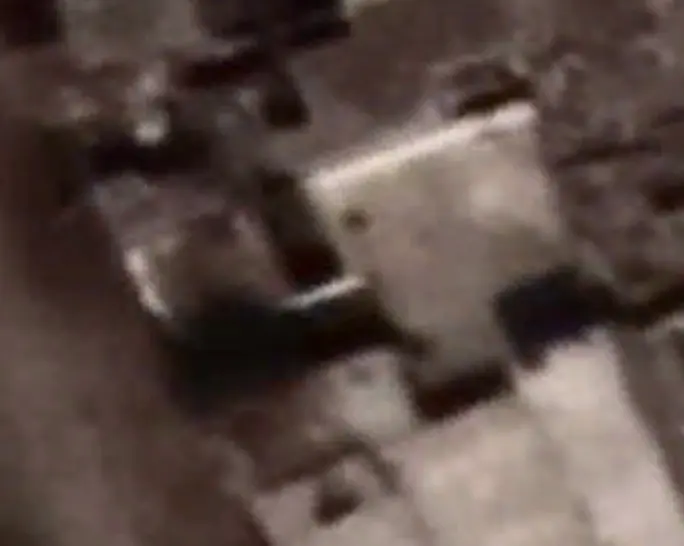
Location of the stable of William Brown (left) in the village of Nazlet-El-Samman, where private GPR surveys were conducted in 2011 using GPR device (right).
GPR surveys confirmed the presence of underground structures.
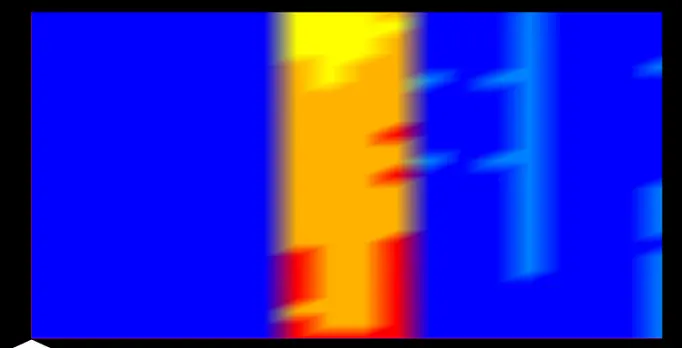
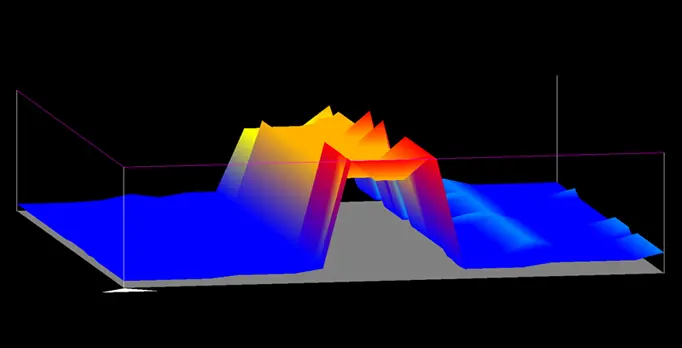
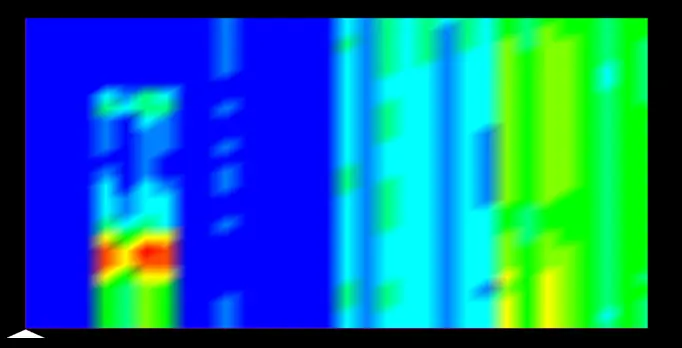
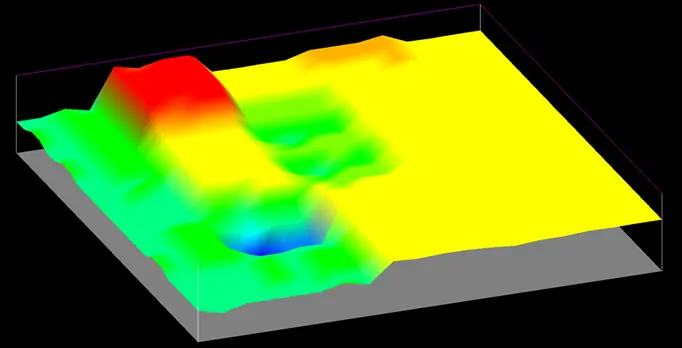
Based on these results, it is inferred that there is a connection between the Sphinx, the Great Pyramid, and the tomb of King Khufu through a network of tunnels.
At many open meetings, Mission Pharaoh informed about the possibility of getting to the tomb of King Khufu this way.

The results of a private GPR survey, made by William Brown at the stables in 2011, showing the expected shafts and tunnels
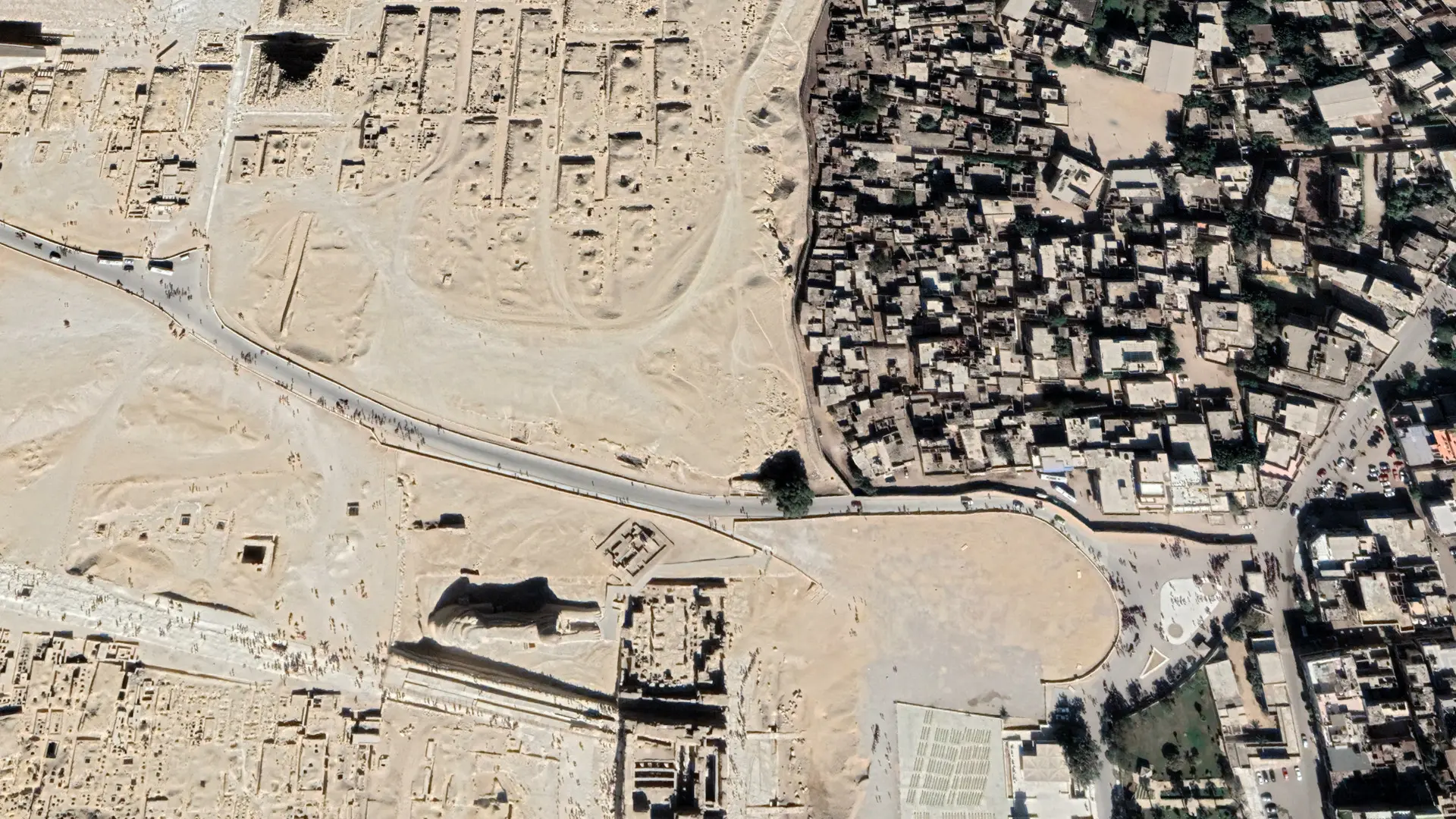

Regardless of the research conducted at the stable, in 2011 Mission Pharaoh, together with the authorities of the Giza Plateau, launched "The Cave Cleanup Project".
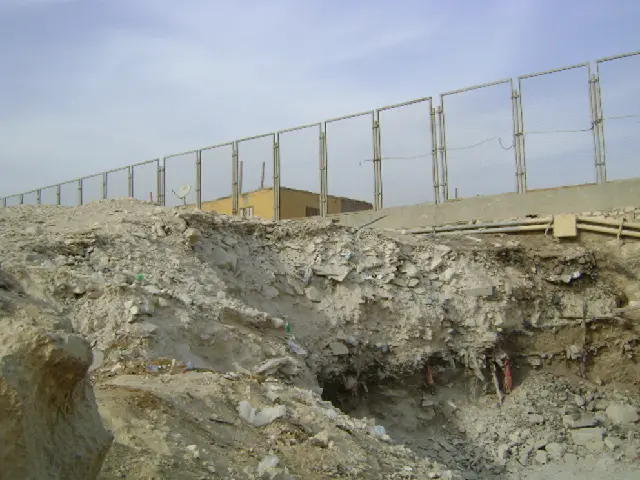

The activities led to the start of clearing the area associated with the nearby GPR zone No. 9, the areas covered by the research in 2006.
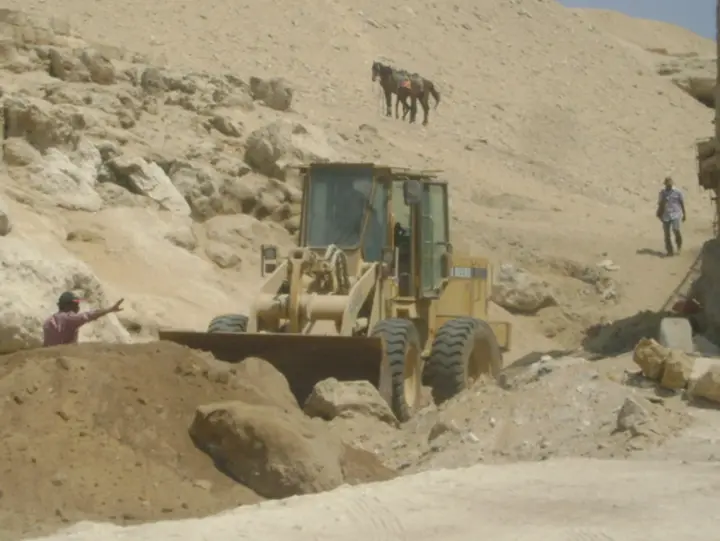
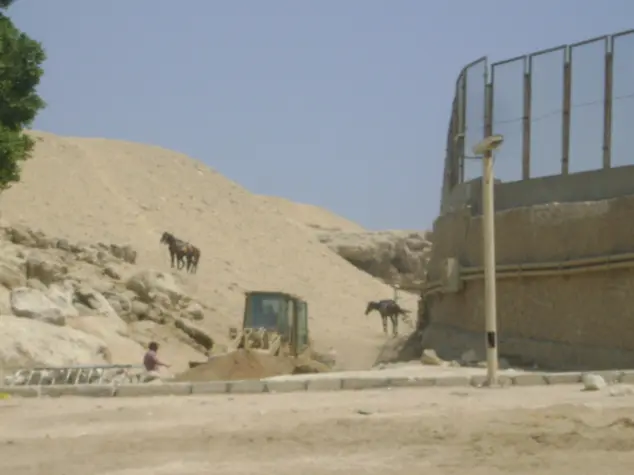
Location of The Cave Cleanup Project in the area of Giza Plateau conducted in 2011. The photos show the area before and during cleansing.
As a result, a network of caves was discovered.
Nevertheless, Mission Pharaoh constantly sought to resume work in this area.

A network of caves discovered during the cleansing by Mission Pharaoh near zone (9) in the Giza Plateau area in 2011.
The "wild" excavations in the area of the village of Nazlet-El- Samman [8-12], which have been ongoing for many years, prompted the Egyptian authori- ties in 2021 to take action to limit this practise.
At that time, the local population was expropriated from the area directly adjacent to the Plateau, and the buildings were demolished.
Remains of William Brown's stable buildings, demolished by the Egyptian authorities in 2021.
[8]: Mira Maged: “Illegal excavation near Giza accidentally uncovers ancient tomb”. Egypt Independent, 2019. Online. Available at: Article
[9]: Egypt Today staff: “More arrests as police crackdown illegal excavation in Giza”. Egypt Today, 2019. Online. Available at: Article
[10]: Bel Trew: “Egyptian Tomb-Robbing Market Explodes on eBay”. The Daily Beast, 2017. Online. Available at: Article
[11]: Kristin Romey: “Ancient Egyptian Artifacts Smuggled Into U.S. Are Heading Home”. National Geographic, 2015. Online. Available at: Article
[12]: Egypt today staff: “Court sentences Egyptian businessman, former MP to 3, 5 years in prison for antiquities trafficking”, Egypt Today, 2023. Online. Available at: Article
Associations that constitute the main core of Mission Pharaoh in 2023.
After many years of calling and waiting for the reaction of the Egyptian authorities, the group addressed the people of science, politics, and the media with an official appeal through Eng. William Brown, in 2021.
The appeal included a request to start immediate excavations at the point 29°58'42.70"N, 31° 8'22.08"E, aiming at discovering the corridor to the tomb of King Khufu, in the indicated area.

The fastest and most convenient of the entrances to the underground leading to the tomb of King Khufu, accessed by a network of underground tunnels.
The passive attitude of the appeal respondents prompted, in October 2022, the members of Mission Pharaoh to independently perform another set of GPR surveys at two points in the village of Nazlet-El-Samman.
This area has been recognized for decades by archaeologists as the location of the palace-temple complex of King Khufu, [3, 4].
Scan Areas

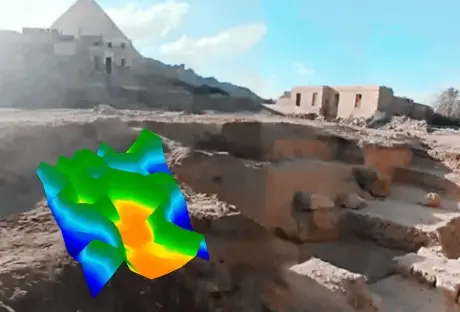
Two locations where Mission Pharaoh conducted GPR surveys in 2022. Point (1) indicates the most convenient place to enter the underground tunnels that lead to the tomb of King Khufu
[3] Lehner, Mark. "The Development of the Giza Necropolis. The Khufu Project." Mitteilungen des Deutschen Archäologischen Instituts, Abteilung Kairo 41 (1985), pp. 109-143. Available at: Lehner_mdaik_41_1985.pdf
[4] Zahi A. Hawass: "THE FUNERARY ESTABLISHMENTS OF KHUFU, KHAFRA AND MENKAURA DURING THE OLD KINGDOM", A Dissertation in Oriental Studies, Presented to the Graduate Faculties of the University of Pennsylvania in Partial Fulfillment of the Requirements for the Degree of Doctor of Philosophy, pp. 133-138, 1987. Available at: Hawass_diss_1987.pdf
The obtained results show the existence of an underground connection between the mentioned palace-temple complex and the tomb of King Khufu.
They were immediately sent to the scientific community of Egypt and Japan (whose scientists conduct research on the Plateau [13]) to motivate decision makers to reach the tomb as soon as possible.

GPR scans, made by Mission Pharaoh, at site No. 1 in 2022.
[13] Egyptian State Information Service: „Fruitful cooperation between Egypt, Japan in restoring Second Khufu Solar Ship, transfer of antiquities”, 2021. Online. Available at: Article
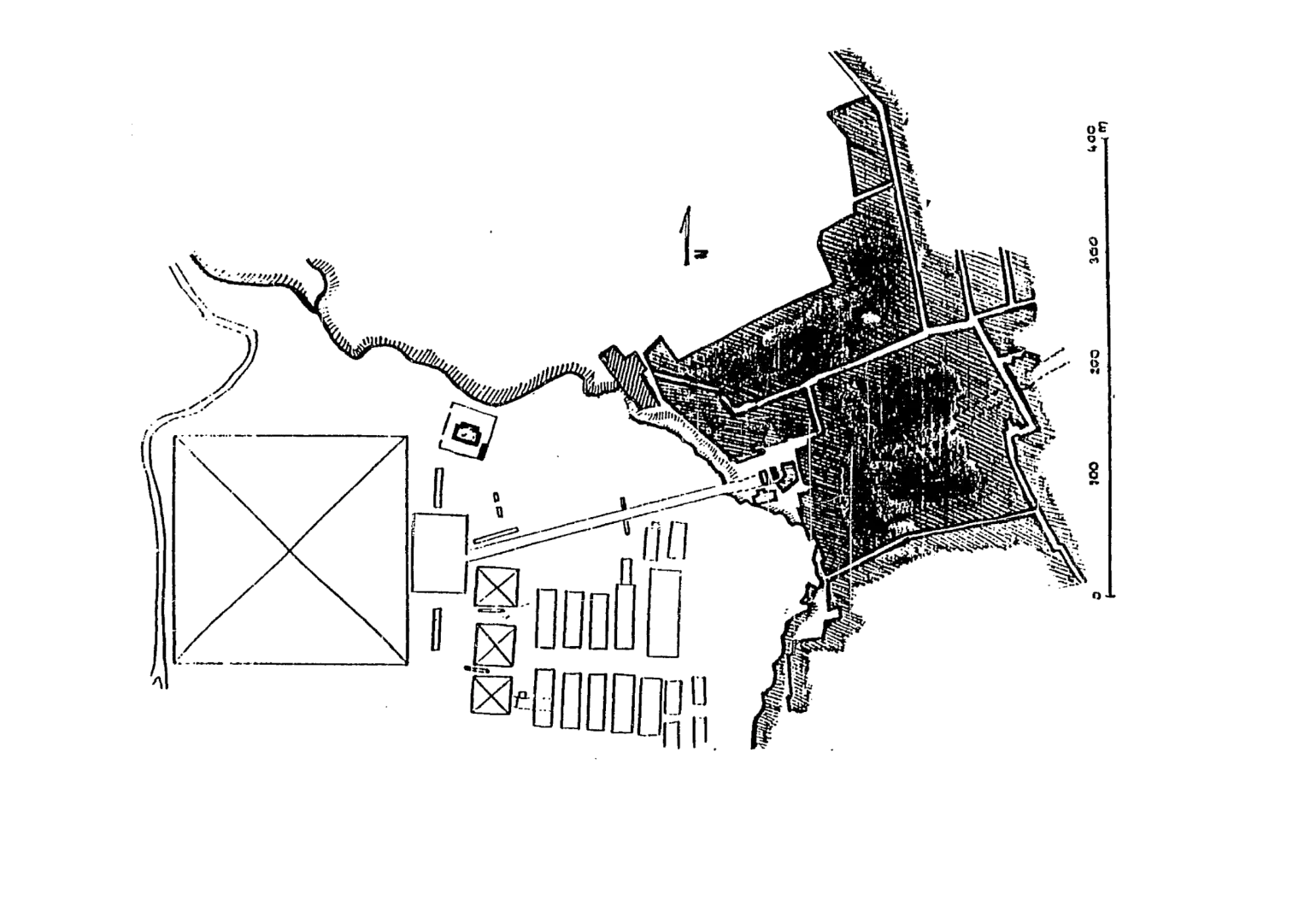

As a result of the information provided, just a month later, archaeologists working with the Egyptian Authorities began cleansing the site at point (2), which is believed to be the location of the Lower Temple of King Khufu, [4].
Ovdlclywvpuapzvmtbjonylhalyhyjohlvsvnpjhsptwvyahujljonylhalyhyjx
Location of the Lower Temple of King Khufu in the Nazlet-El-Samman village.
IMG source, [4]: Zahi A. Hawass: "THE FUNERARY ESTABLISHMENTS OF KHUFU, KHAFRA AND MENKAURA DURING THE OLD KINGDOM", A Dissertation in Oriental Studies, Presented to the Graduate Faculties of the University of Pennsylvania in Partial Fulfillment of the Requirements for the Degree of Doctor of Philosophy, pp. 778, 1987. Available at: Hawass_diss_1987.pdf
After many years of solicitation and persuasion, the time has finally come to carry out archaeological work on site number (1) and issue permits for deep excavation.
According to Mission Pharaoh, site number (1) has exceptionally high historical value and will reveal one of the underground passages that leads directly to the tomb of King Khufu.
Help us so that this time the cooperation proposal will not remain unanswered!
